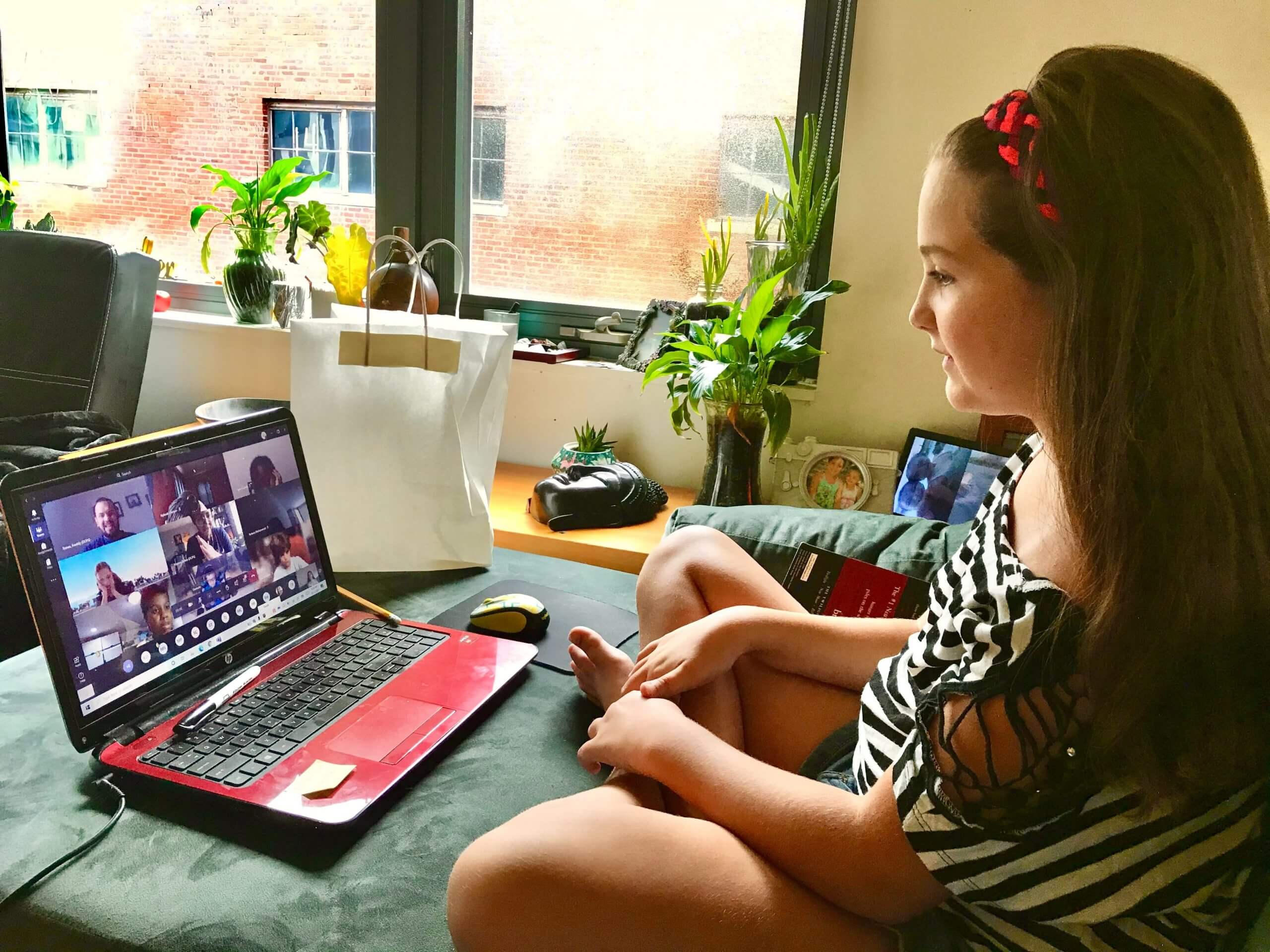During the Covid-19 pandemic, Zoom.com has quickly risen to become the go-to choice for businesses and schools to hold meetings and classes. As parents, we worry so much about our teens being bullied when they are in school. It’s easy to think that the bullying would ease up when they are spending more time at home, attending classes through Zoom.
Cyberbullying certainly isn’t a new phenomenon for parents, however, along with worrying about regular cyberbullying, a new variation on cyberbullying has arisen via Zoom. Also known as Zoom bombing, this is a serious concern that should be addressed as soon as it is recognized.
Knowing what to look for is so important. Whether it is your teenager being bullied or doing the bullying, you can help control the situation if you know the signs.
What do Zoom bullying and Zoom bombing look like?
Screen time for teens has skyrocketed during the pandemic, but so have cases of both cyberbullying and Zoom bombing.
Zoom bombing involves the deliberate disruption of online meetings. Those doing the Zoom bombing have ranged in age from adolescents to adults. The disruptions of the meetings go beyond just interruptions. Hateful comments, inappropriate comments and more, all serve as intrusive and abusive behavior during Zoom sessions. This behavior is bursting into online classes and even business meetings. In some states, it can potentially be a legal issue.
Zoom classes are filled with cyberbullying from students and strangers alike. Some students, empowered by boredom and the freedom to behave how they want at home, are incredibly abusive.
This troubling abusive trend is seen in chat sessions, video presentations, and more. Perhaps a teen doing a presentation is mocked. Or maybe their background is cluttered or not what bullies think is the norm. Sometimes students are bullied simply because the bully defaulted to picking on them. It can be a challenge for teachers to constantly monitor the chat windows due to juggling many things at once, often including their own children learning from home.
In any form, bullying and cyberbullying are serious. They can even lead to depression, increased anxiety over school, and the potential for suicidal thoughts and actions.
Is your teen doing the bullying?
No parent wants to believe that their troubled teen is responsible for the bullying behavior over Zoom classes or via any other medium. Perhaps you’ve seen the signs of your child hiding their laptop or phone from you when you walk into the room. Or, maybe you’ve had a few complaints from teachers and other parents about your teen being the cyberbully.
What now? How can you recognize the signs of your child being a cyberbully over Zoom?
Observe a Zoom session from within the same room. Does your teenager appear to be the one saying unkind things, laughing cruelly, and making unkind comments when another is speaking?
If you can observe their Zoom history, that will be very beneficial if you believe there to be an existing problem. Often, there is a fine line between invading their privacy and wanting to get to the truth of what they may be doing when you are not observing them.
Once you have recognized the signs that it is your teen doing the bullying, there are several steps that you can take to control the behavior going forward.
- Don’t react in an angry and judgmental manner even if you are furious. Reacting with anger will only serve to put your child on the defensive.
- Establish defined expectations about online behavior and in Zoom class behavior.
- Make it clear what type of content should and shouldn’t be shared with others.
- Establish defined screen time rules. You should expect to get a fair bit of pushback on this.
It can be a challenge to monitor the chat box used in Zoom classrooms constantly. It is a crucial part of keeping students engaged and interactive. Please remind your student that teachers and other parents may observe and notice their poor behavior.
Ensure that you are modeling respectful and positive digital behavior, whether in Zoom calls for work or social media. If your troubled teen has observed your behavior, he may be adopting it for his own guide regarding how to behave in an online setting.
How teachers can address Zoom cyberbullying
Getting involved with the teachers hosting the Zoom classes can make a huge difference. Several security features are designed to help educators control their online classrooms. There are also tools to help manage disruption so that teachers can do their job well.
Some ways that teachers can mitigate Zoom bullying include:
- The Lock Meeting button can be used to keep out anyone who is not assigned to that virtual classroom. Using this feature can keep Zoom bombing people out of the sessions once they have started.
- The teacher can control screen sharing. The educator can set the class to allow only them to share content.
- The chat feature is beneficial, but it can also be locked down so that students cannot message each other during classes. This isn’t always ideal, but it can help to keep inappropriate content at bay during class.
- If a Zoom bomber enters the virtual classroom or a student is abusive, the teacher can remove them from the Zoom session in just a few clicks.
- Teachers can require registration so that they know who has access to their class and their students. A helpful feature to dissuade bullying is to disable students’ ability to join the Zoom class before the teacher is ready to join.
- Students who are being disruptive can be muted and have their video disabled.
Is it essential that parents keep an open line of communication with teachers to feel comfortable reporting any instances of cyberbullying.
Guiding your student if they are being bullied
If your student is being bullied over Zoom, it is important that you help them to take the best approach. Unlike other forms of bullying behavior, cyberbullying does not present with the same physical bruises and getting tearful about going to school.
It can be much more insidious and difficult to recognize. For example, if your child suddenly appears to have an influx of new followers on social media, you may initially think that this is a positive thing. However, a rapid increase in followers can be a sign of cyberbullying. These new “friends” may just be looking for a way to post abusive messages to your teenager.
Other signs could include the following:
- Spending less time using a tablet, phone, or computer. Interest can certainly wax and wane. But if you know your child’s habits and device usage, you will understand the context of sudden changes.
- Deleting social media accounts or refusing to log into Zoom classes.
- Recognizing intense behavioral changes after time on social media or after Zoom classes.
- A decrease in self-esteem, accompanied by comments that seem out of character for your child.
- Sleeping less, eating less, and withdrawing from favorite activities can be signs of cyberbullying.
Remember that your ability to recognize and address cyberbullying depends largely on your ability to keep ongoing tabs on what your troubled teen is doing online. Some resources can help you and your family work through challenges and find a new normal that works for you each.
If your teen is struggling, you could find that a residential treatment center can provide them with the guidance and mental health help needed to establish that sense of normalcy. At Help Your Teen Now, we can help your family find the right residential treatment center. Licensed medical professionals will be able to work with your family to find solutions that work for each of you.
Reach out to learn more about a residential treatment center that may help you address the concerns facing your family.











0 Comments